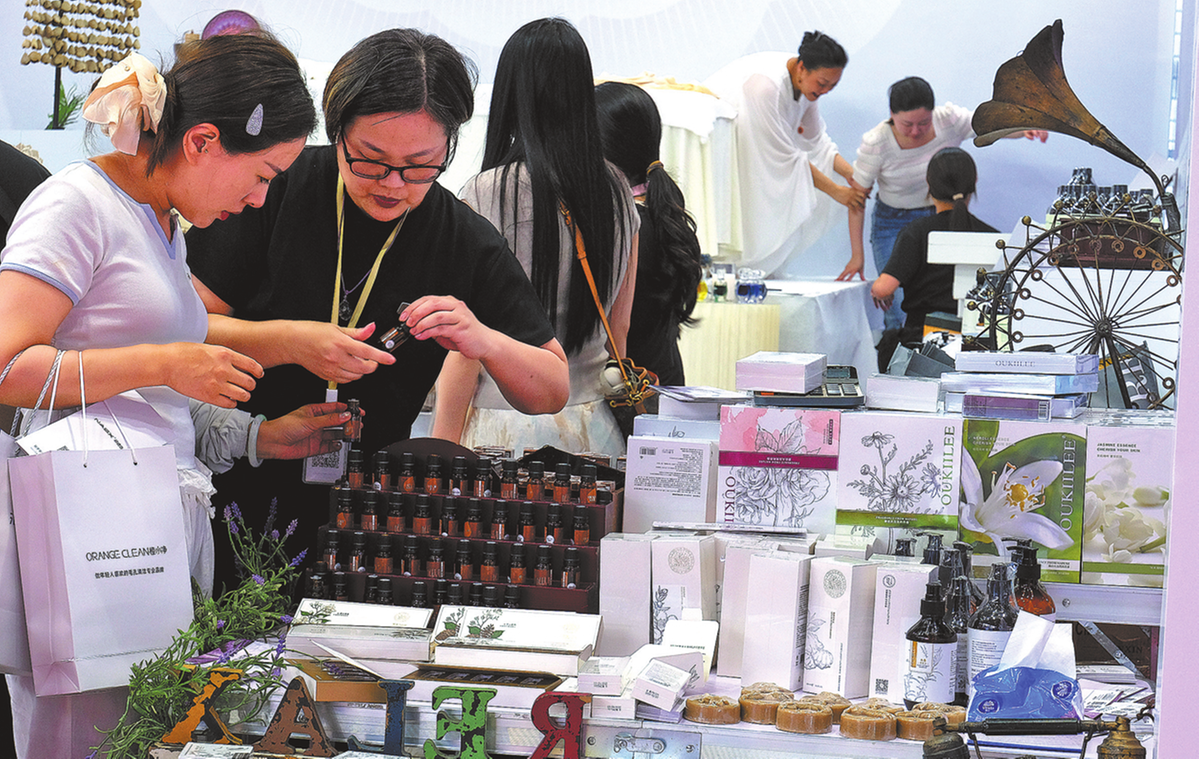Innovation key growth driver in skincare mkt
Uptrend expected to be driven by surging demand for sensitive-skincare, anti-aging options, growing popularity of men's products


Huaxizi, also known as Florasis, a Chinese beauty brand with cultural and aesthetic attributes, first introduced the company's skincare line in September, a move driven by growing demand for related products from consumers.
Last year, the transaction value of China's skincare market exceeded 420 billion yuan ($59.03 billion). While the figure declined slightly compared with 2023, the transaction value is expected to surpass 530 billion yuan by 2029, with a compound annual growth rate of 4.8 percent from 2024 to 2029, the consulting firm Frost & Sullivan has predicted.
This growth is expected to be driven by consumers' surging demand for sensitive-skincare and anti-aging products, as well as the growing popularity of men's skincare products, the consultancy said.
The Hangzhou, Zhejiang-based company has newly launched a range of skincare products via both online and offline channels, with products categories covering face creams, essences, toners, lotions and facial masks.
Leveraging the characteristics of Chinese consumers' skin and elements of Chinese culture, Florasis has developed technologies and products infused with distinct Chinese traits. The brand said this endeavor, driven by cultural confidence and technological innovation, allows it to convey the diversity of aesthetic culture to global consumers.
"Based on consumers' complexion concerns, the specific skincare demand of Asian women, and our research and development in relevant technologies over the past five years, we are confident in providing consumers with skincare solutions that enhance their skin complexion," said Li Huiliang, chief scientist of EastGarden Cosmetics Group, the parent company of Florasis.
In the Government Work Report delivered in March, boosting consumption was listed as a top priority among this year's major tasks.
In the first eight months of this year, total retail sales, a gauge of consumption, reached 32.39 trillion yuan, up 4.6 percent year-on-year. Specifically, the retail sales of goods reached 28.74 trillion yuan, growing 4.8 percent year-on-year, said the National Bureau of Statistics.
A new report by KPMG found that over the six-month period, China's healthcare and cosmetics market has demonstrated strong resilience and a clear positive growth trend. Younger consumers, particularly Generation Z (those born between the mid-1990s and the early 2000s), have gradually emerged as the main force driving the country's beauty product consumption.
KPMG noted that domestic companies have stepped up innovation in cosmetic ingredients, with a growing number actively engaging in the R&D of natural products featuring eco-friendly components. This shift aims to meet the demand of consumers who are increasingly embracing sustainable and healthy lifestyles.
Meanwhile, China's National Medical Products Administration issued a guideline earlier this year to support cosmetic ingredient innovation, encouraging industry players to develop cosmetics with more raw materials featuring Chinese characteristics.
Over the past few years, more domestic skincare brands have emerged rapidly in the market. According to Frost & Sullivan, leading industry players such as Proya, Kans and Winona collectively account for over 50 percent of the market share among domestic skincare brands.
Like many other industries, expanding research and development while embracing the application of innovative technologies has become important foundations on which Chinese beauty brands can enhance their international competitiveness.
"China's skincare market is undergoing a shift from a functional focus to a refined, technological and personalized orientation. Domestic brands are accelerating their growth by leveraging ingredient innovation, channel transformation and precision marketing," said Yuan Xucong, an analyst of Frost & Sullivan.
"Next, the integration of technology with artificial intelligence and biosynthesis, sustainable development and the exploration of diverse consumer demand will become the core drivers of industry growth," Yuan said.
Meanwhile, driven by the implementation of childcare subsidy policies, the ongoing trend of consumption upgrading and young parents' focus on refined parenting, skincare products for babies and toddlers in China hold significant growth potential.
Despite a declining birth rate, the per capita consumption value of related skincare products has continued to grow in China.




































